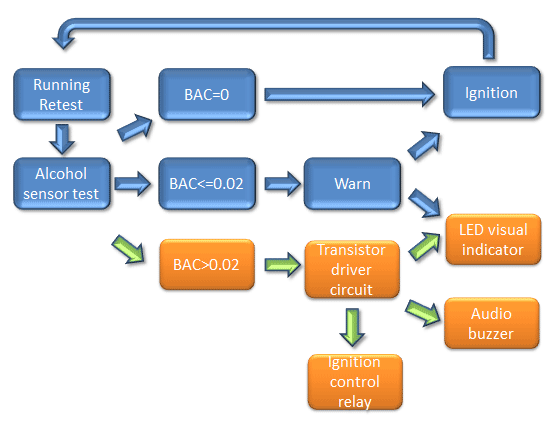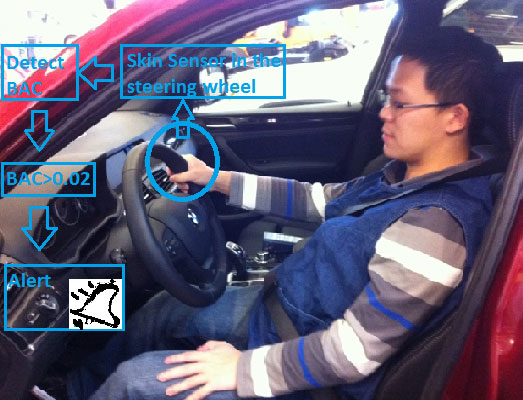Drunk driving is a big problem in every part of the nation. In 2009 alone, over 10,000 traffic fatalities were linked directly to drivers who had blood alcohol levels above the legal limit. Alcohol sensors can help to prevent these accidents. There are three common alcohol sensing technologies. One is a sniffer, which detects alcohol in the air or in the breath of the driver. Skin sensing technologies can estimate BAC by detecting alcohol thru the pores of the skin. The third approach is facial recognition and the identification of behavioral patterns that can determine when someone is drunk (e.g. by tracking eye and facial movements).
Sniffers
Sniffers can detect trace amounts of alcohol in the air. They can be used to determine if the person behind the steering wheel is drunk. An advantage is that sniffer systems do not require skin contact and can operate at a distance. Sniffers placed in the vicinity of a driver are capable of measuring the driver's breath or tissue for alcohol. This technology is rather small and can be placed into law enforcement flashlights to determine whether a driver has alcohol on his or her breath or whether a drink has alcohol in it. Alcohol can be detected in the air of a car, even when the windows are half-down and the air conditioning is on. Systems employing these sensors can lock a car's ignition if the driver is too impaired to drive legally.

Skin Sensors
Skin sensors shine light through the skin to determine a person's blood alcohol concentration (BAC). These devices estimate BAC by measuring how much near-Infrared light at a particular wavelength is absorbed from a beam reflected from the driver's skin. Skin sensors are touch-based and as such require skin contact. Toyota has begun developing a steering wheel that can detect alcohol thru the pores of your skin. These sensors could also be placed in the shift knob to determine if the driver is drunk.

Facial and Behavioral Pattern Recognition
Using a camera pointed at the driver's face, automakers have demonstrated an ability to determine when someone is drunk by tracking eye and facial movements and then comparing them to how the vehicle is being driven. Also, drunk drivers tend to have certain identifiable driving patterns (e.g. the way they use the steering, accelerator, and brake). A computer can monitor these inputs and use them to help determine whether a driver is drunk.


